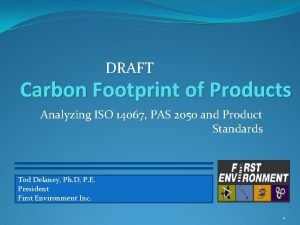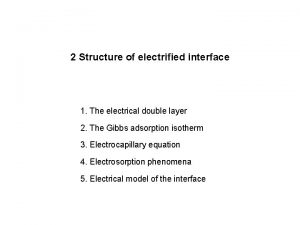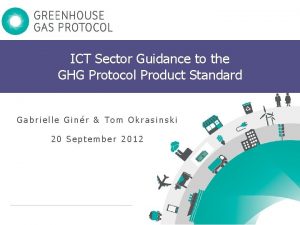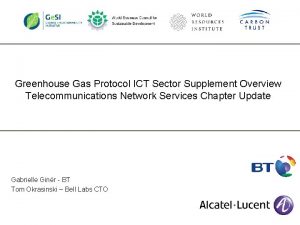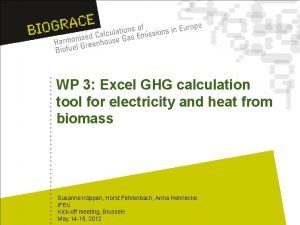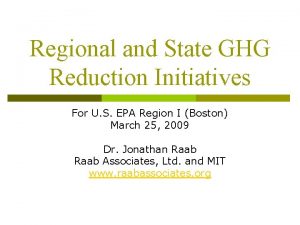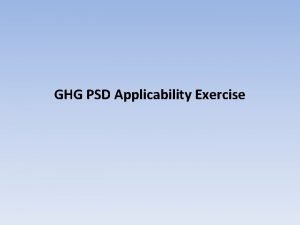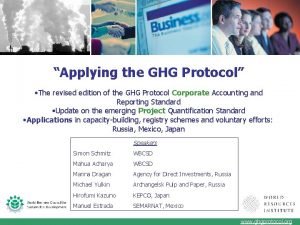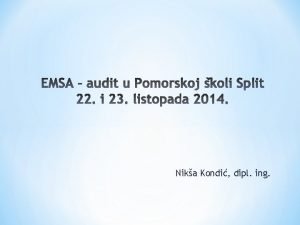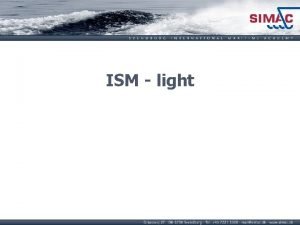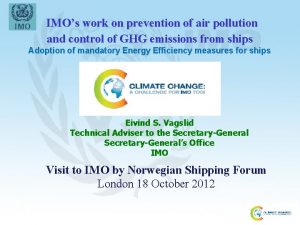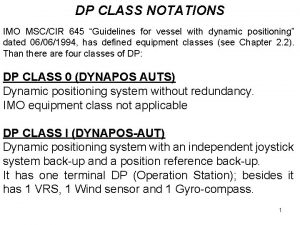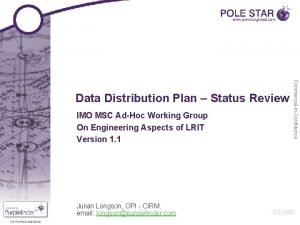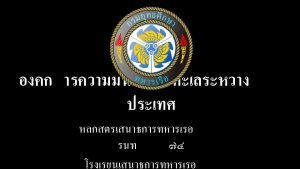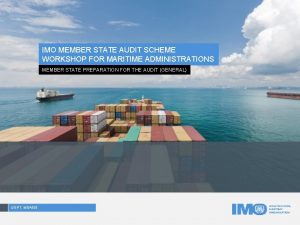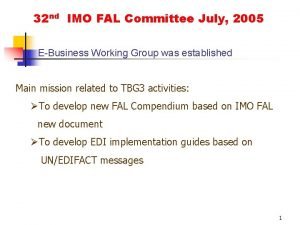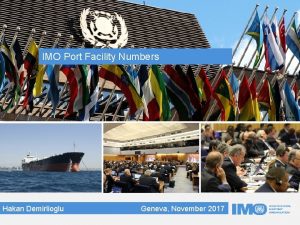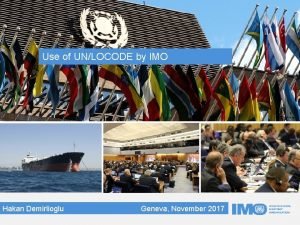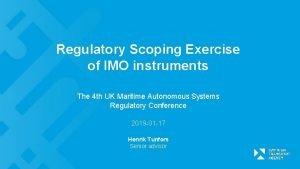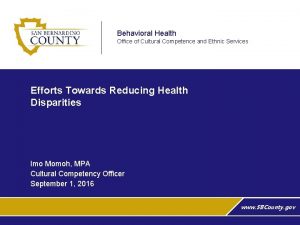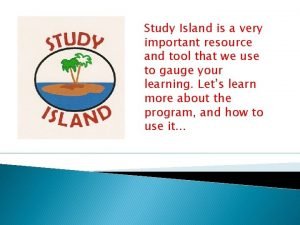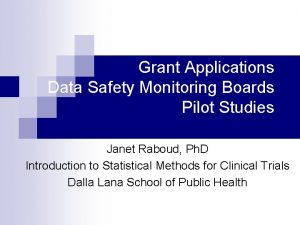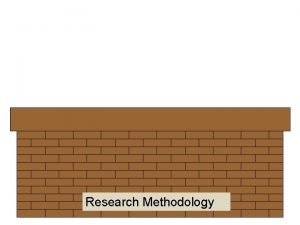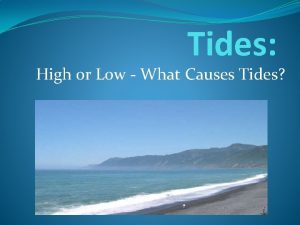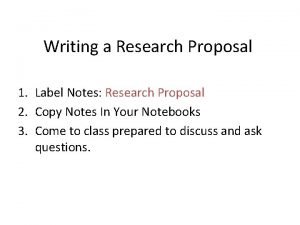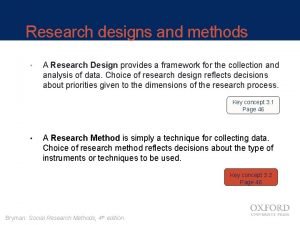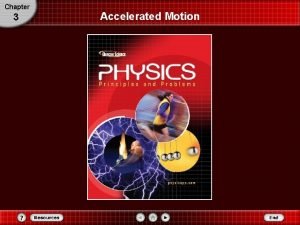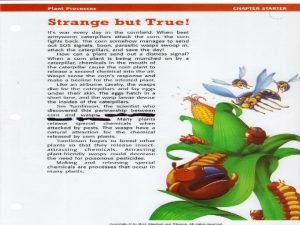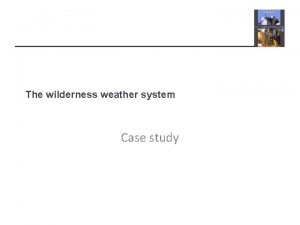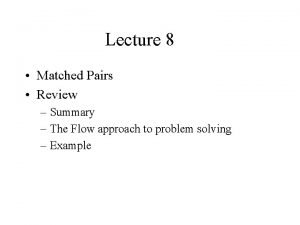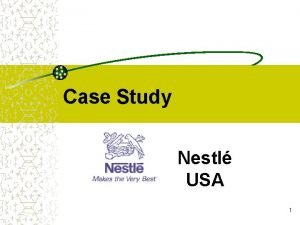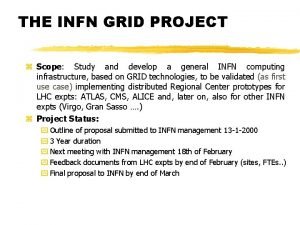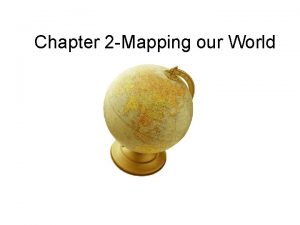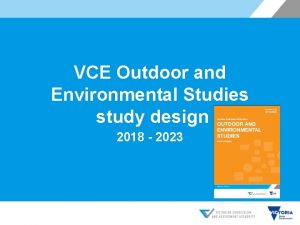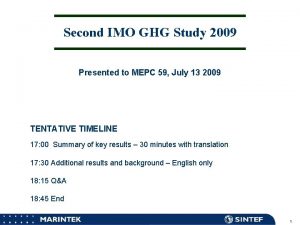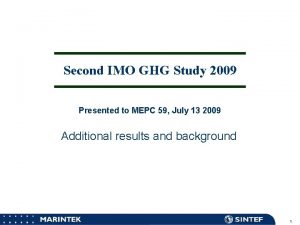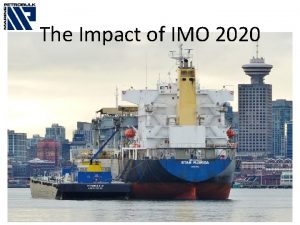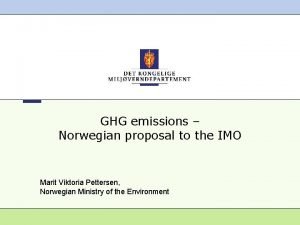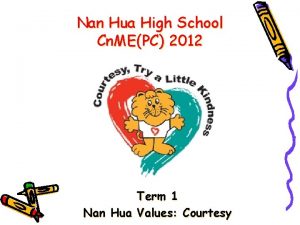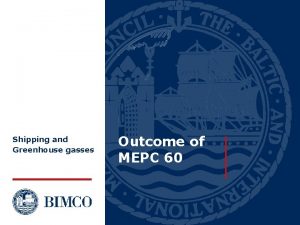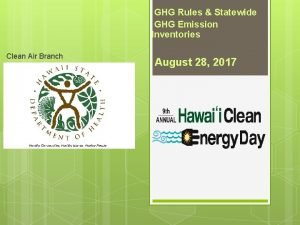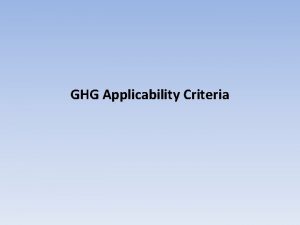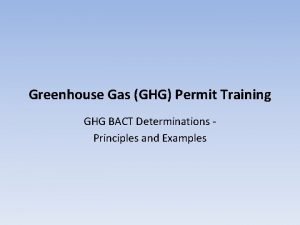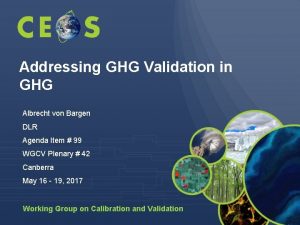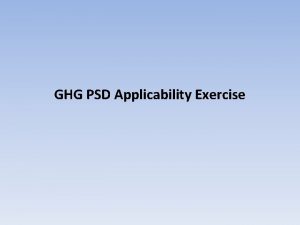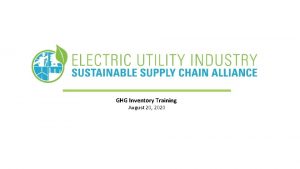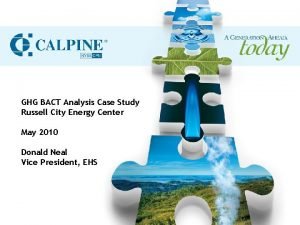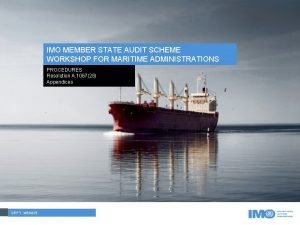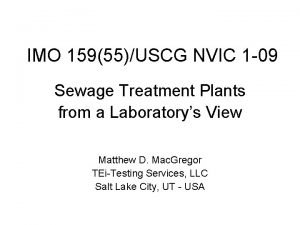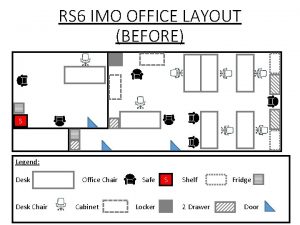IMO 3 rd GHG Study To IMO MEPC

























































- Slides: 57

IMO 3 rd GHG Study To IMO MEPC, 14 th October, London

Contents • International shipping’s CO 2 emissions 2007 -2012 • Inventory method and detailed results • Inventory results for non-CO 2 emissions • Scenarios for future emissions

Inventory of international shipping’s emissions

Brief history of IMO GHG studies October 2014: April 2009: March 2000: MEPC received First IMO GHG Study, Base year 1996 September 1997: International Conference of Parties to the MARPOL Convention MEPC received Second IMO GHG Study, Base year 2007 Historical emissions from 1990 Future scenarios to 2050 MEPC received Third IMO GHG Study, Years 2007 -2012 Future scenarios to 2050

Global CO 2 and economy trends Shipping is a small fraction (2 -3%) of global CO 2 But it contributes similar amounts as major nations So, let’s transform into an index to compare trends © Corbett, Smith, Anderson 2014

Global CO 2 and economy trends Sources: GDP data, World Bank, http: //data. worldbank. org/indicator/NY. GDP. MKTP. CD, accessed October 2014. Global CO 2 estimates, Table 6. 1 of WG AR 5 2013 report, http: //www. climatechange 2013. org/images/report/ Shipping CO 2 estimates spanning 1990 -2012, IMO GHG Studies (all three), 2000, 2009, 2014. World Seaborne Trade, Review of Maritime Transport, UNCTAD, 2013. All cited in the IMO GHG Study 2014 Second IMO GHG Study (consensus activity-based) First IMO GHG Study (top-down fuel statistics) 6 © Corbett, Smith, Anderson 2014

Global CO 2 and economy trends Second IMO GHG Study (consensus activity-based) 2007 -2012 First IMO GHG Study Third IMO GHG Study (top-down fuel statistics) 7 © Corbett, Smith, Anderson 2014

Consensus CO 2 emissions (tonnes) and shipping as a % share of global CO 2 emissions

Consensus CO 2 e emissions (tonnes) and shipping as a % share of global CO 2 e emissions

Activity-based methods preferred 2009 Study followed Tier 3 mostly SHIP-TECHNOLOGY DETAIL EMISSIONS DETAIL 2014 Study advanced Tier 3 SHIP-FUEL DETAIL 2000 Study followed Tier 2 mostly ONLY FUEL DETAIL Flowchart based on Decision Tree(s) for estimating mobile source emissions; 2006 IPCC Guidelines for Greenhouse Gas Inventories, http: //www. ipcc-nggip. iges. or. jp/public/2006 gl/pdf/2_Volume 2/V 2_3_Ch 3_Mobile_Combustion. pdf 5 © James J. Corbett, 2014 © Corbett, Smith, Anderson 2014

Uncertainty provides an upper estimate Adjusted total International Bunkers Quantify uncertainty in top-down marine fuel statistics for first time Two key sources of uncertainty: 1. Sector misallocations (Exports. World ≠ Imports. World) 2. Transfers reporting errors/omissions (Tout ≠ Tin) Report pg. 113 11 © Corbett, Smith, Anderson 2014

Top-down and bottom-up results IMO Study 2009 and 2014, international shipping Year 2007 best-estimates for both IMO Study 2009 and 2014 are in close agreement; greater differences between bottom-up and top-down than between studies Report pg. 70 12 © Corbett, Smith, Anderson 2014

2007 © Corbett, Smith, Anderson 2014

2008 © Corbett, Smith, Anderson 2014

2009 © Corbett, Smith, Anderson 2014

2010 © Corbett, Smith, Anderson 2014

2011 © Corbett, Smith, Anderson 2014

2012 © Corbett, Smith, Anderson 2014

Activity model results are compared against noon-report data © Corbett, Smith, Anderson 2014

Fuel consumption, all ship types by engine/boiler, 2012 (bottom-up method) © Corbett, Smith, Anderson 2014

CO 2 emissions, international shipping, 2007 -2012 (bottom-up method) © Corbett, Smith, Anderson 2014

Container ship annual main engine consumption © Corbett, Smith, Anderson 2014

Dry bulk trends (2007 -12) 1. 9 1. 7 1. 5 1. 3 1. 1 0. 9 0. 7 0. 5 2007 2008 2009 Fleet total dwt capacity 2010 2011 2012 Average dwt © Corbett, Smith, Anderson 2014

Dry bulk trends (2007 -12) 1. 9 1. 7 1. 5 1. 3 1. 1 0. 9 0. 7 0. 5 2007 2008 2009 2010 2011 2012 Fleet total dwt capacity Average dwt Demand tonne-miles Fleet total CO 2 emissions © Corbett, Smith, Anderson 2014

Dry bulk trends (2007 -12) 1. 9 1. 7 1. 5 1. 3 1. 1 0. 9 0. 7 0. 5 2007 2008 2009 2010 2011 2012 Fleet total dwt capacity Average dwt Demand tonne-miles Fleet total CO 2 emissions Fleet transport work CO 2 intensity Fleet total installed power © Corbett, Smith, Anderson 2014

2007 1 0. 9 0. 8 0. 7 0. 6 0. 5 0. 4 0. 3 0. 2 0. 1 0 2012 20% 5000 -7999 TEU 60000 -99999 80000 -119999 container dwt bulker dwt tanker ratio of operating to design speed (%) main engine output (%MCR) © Corbett, Smith, Anderson 2014

2012 2007 1 160 0. 9 140 50% 0. 8 120 0. 7 0. 6 100 0. 5 80 0. 4 60 0. 3 35% 0. 2 20 0. 1 0 40 5000 -7999 TEU 60000 -99999 80000 -119999 container dwt bulker dwt tanker ratio of operating to design speed (%) average daily fuel consumption 0 main engine output (%MCR) © Corbett, Smith, Anderson 2014

Inventory results for non-CO 2 emissions

Emission factor (EF) sources Substance Source CO 2 MEPC 63/23, Annex 8 NOx ENTEC 2002 for Tier 0; IMO Annex 6 Standards Tiers I-II; LNG – Kristensen 2012; Gas Turbine & Steam Engines – IVL 2004 SOx* Mass balance - Jalkanen et al, Atmos. Chem. Phys. , 9 (2009); LNG – Kunz & Gorse 2013 CO Sarvi et al, Fuel Proc. Tech. , 89 (2008); LNG – Kristensen 2012; Gas Turbine & Steam Engines – IVL 2004 PM* EPA 2007; LNG – Kristensen 2012; Gas Turbine & Steam Engines – IVL 2004 N 2 O EPA 2014; LNG – Kunz & Gorse 2013 CH 4 IVL 2004; LNG – MARINTEK 2010 NMVOC ENTEC 2002; LNG – Kristensen 2012 • LNG emission factors based on Otto cycle engines • Fuel sulphur content taken from IMO sulphur monitoring reports. Geographical limits of ECAs taken from IMO documentation and applied accordingly. • Non-combustion related emissions follow the methods described in IMO Study 2009 Report pg. 122 -142 29 © Corbett, Smith, Anderson 2014

Other Greenhouse Gases • 2007 -2012 changes in estimated international shipping CH 4, N 2 O, & CO 2 emissions Report pg 62 Table 16; pg 137 Tables 61 & 62 © Corbett, Smith, Anderson 2014

Other Relevant Substances • 2007 -2012 changes in estimated international shipping SOx, NOx, & CO 2 emissions Report pg 62 Table 16; pg 138 Tables 63 & 64 © Corbett, Smith, Anderson 2014

Scenarios for future emissions

Emissions projection • 2 nd IMO GHG Study projected rapid emissions increase • Since it’s publication • A new set of long-term socio-economic scenarios has been developed by IPCC • Larger and more efficient container ships have entered the market • New emission projection methods have been developed, • Based on transport work activity, rather than tonnes of cargo • Taking into account non-linear relations between activity drivers (e. g. GDP) and activity (transport work) • IMO Study 2014 has developed new projections © Faber 2014

CO 2 emissions projections Shipping CO 2 emissions are projected to increase by 50% to 250% in the period to 2050, despite fleet average efficiency improvements of about 40%. +250% +160% +100% +50% © Faber 2014

Projections for other species 300 250 2012 150 2020 2050 100 50 0 CO 2 SO 2 PM Nox © Faber 2014

Projection model Emissions Emission factors MARPOL ECAs Fuel consumption Energy demand Fuel mix Energy content ECAs EEDI, SEEMP Autonomous improvements Speed MAC curve Transport work Fuel prices Transport demand Fleet composition Ship size Fleet productivity GDP projections Coal and oil consumption projections © Faber 2014

Projection model Emissions Emission factors MARPOL ECAs Fuel consumption Energy demand Fuel mix Energy content ECAs EEDI, SEEMP Autonomous improvements Speed MAC curve Transport work Fuel prices Transport demand Fleet composition Ship size Fleet productivity GDP projections Coal and oil consumption projections © Faber 2014

Projection model Emissions Emission factors MARPOL ECAs Fuel consumption Energy demand Fuel mix Energy content ECAs EEDI, SEEMP Autonomous improvements Speed MAC curve Transport work Fuel prices Transport demand Fleet composition Ship size Fleet productivity GDP projections Coal and oil consumption projections © Faber 2014

Shipping CO 2 emissions Additional efficiency 40% → 60% © Faber 2014

Thank you for enquiries, please contact: Inventories 2007 -2012 - tristan. smith@ucl. ac. uk Scenarios 2012 -2050 – faber@ce. nl

Backup slides….

Fleet disaggregation aligned with IMO • Combined IMO Study 2009 and EEDI ship type definitions • Size categorisations consistent with IMO Study 2009 • Fleet definition: IHSF observed AIS observed In-active <300 GT Present in IHSF and activity data Report pg. 58 Incomplete IHSF data Domestic navigation only 42 © Corbett, Smith, Anderson 2014

LRIT data provides independent quality check of AIS derived inputs Report pg. 86 43 © Corbett, Smith, Anderson 2014

% of high reliability AIS coverage AIS Coverage and its agreement with LRIT estimated activity 70% International shipping 60% domestic and fishing 50% 40% 30% 20% 10% 0% 2007 2008 2009 2010 2011 2012 Report pg. 96 -98 © Corbett, Smith, Anderson 2014

Uncertainty provides an upper estimate Adjusted total International Bunkers Quantify uncertainty in top-down marine fuel statistics for first time Two key sources of uncertainty: 1. Sector misallocations (Exports. World ≠ Imports. World) 2. Transfers reporting errors/omissions (Tout ≠ Tin) Report pg. 113 45 © Corbett, Smith, Anderson 2014

Fuel type allocation remains uncertain All ship division of fuels is similar to top-down sales ratio International ship division of fuels suggests more HFO used Report pg. 65 © Corbett, Smith, Anderson 2014

Fuel type allocation for bottom-up method Report pg. 65 © Corbett, Smith, Anderson 2014

Top-down CO 2 estimates Top-down statistics report ZERO natural gas in international bunkers; we know that natural gas IS used aboard international ships Report pg. 68 48 © Corbett, Smith, Anderson 2014

Top-down and bottom-up results IMO Study 2009 and 2014, all shipping Year 2007 best-estimates for both IMO Study 2009 and 2014 are in close agreement; greater differences between bottom-up and top-down than between studies Report pg. 69 49 © Corbett, Smith, Anderson 2014

Top-down and bottom-up results IMO Study 2009 and 2014, international shipping Year 2007 best-estimates for both IMO Study 2009 and 2014 are in close agreement; greater differences between bottom-up and top-down than between studies Report pg. 70 50 © Corbett, Smith, Anderson 2014

Uncertainty quantification, top-down and bottom-up All ships International ships Report pg. 114 © Corbett, Smith, Anderson 2014

IMO Study 2014 and IMO Study 2009 top-down and bottom-up comparisons All ships International ships Report pg. 116 -117 © Corbett, Smith, Anderson 2014

Improved activity data has reduced uncertainty, key uncertainties quantified Bottom-up method impacts of uncertainty on CO 2 inventories • Activity estimates – Speed – Days at sea Included in uncertainty analysis 2009 study 2014 study High Low Yes High Med Yes Low No High No • Fleet data – Number of ships in-service / laid up – Ship technical specification (e. g. auxiliary engine and boiler) • Fuel type used (HFO, LSFO, LNG and MDO) • Allocation to international / domestic Report pg. 114 © Corbett, Smith, Anderson 2014

Comparisons can be understood using activity-based data Similarities Differences Correlation across vessel types confirms general validity; explains differences Report pg. 117 -120 © Corbett, Smith, Anderson 2014

Explanation of differences Difference Source 2014 Study 2009 Study Overall effect Days at sea Data and method Uses quarterly IHSF Annual IHSF status indicator to status indicator indicate if laid up for part only of the year At sea main engine MCR Data and method Uses AIS data extrapolation, quality checked using LRIT and noon reports AIS informed Minor increase expert judgment in emissions Auxiliary Data and method Aux power outputs derived from vessel boarding data and applied specific to mode of operation Expert judgment Minor increase annual in emissions aggregates Minor decrease in emissions © Corbett, Smith, Anderson 2014

Specific Fuel Oil Consumption (SFOC) and Emission Factor (EF) sources • Reference SFOC for engines, by year and type, are taken from IMO Study 2009 • Baseline SFOC for EF g/g calculations: – ENTEC 2002; IVL 2004; LNG - Wärtsilä • All EFs start as energy-based (g/k. Wh) then converted to fuel-based (g/g of fuel) – EFs in g/k. Wh divided by the associated baseline SFOC also in g/k. Wh to get g pollutant/g fuel • EFs are provided by engine type (main/aux, engine speed, NOx tier, technology) • EFs are adjusted for fuel types and engine load – Fuel correction factors used to estimate any fuel type/sulphur content combination (ECA & IMO annual sulphur contents) – Load dependency of SFOC from Jalkanen et al, Atmos. Chem. Phys. , 12 (2012) Report pg. 122 -142 56 © Corbett, Smith, Anderson 2014

Other Relevant Substances • 2007 -2012 changes in estimated international shipping SOx emissions, avg fuel sulfur content, & CO 2 x FSC Report pg 62 Table 16; pg 125 Table 43; pg 138 Table 63 © Corbett, Smith, Anderson 2014
 Pas2050
Pas2050 Ghg+
Ghg+ Ghg protocol ict sector guidance
Ghg protocol ict sector guidance Ghg protocol ict sector guidance
Ghg protocol ict sector guidance Biograce
Biograce U.ghg
U.ghg Ghg exercise
Ghg exercise Ghg protocol revised
Ghg protocol revised Imo's
Imo's How to use imo
How to use imo Imo
Imo Imo resolution a.647(16)
Imo resolution a.647(16) Imo's
Imo's Best dp for imo
Best dp for imo Opi-imo
Opi-imo Imo
Imo Imsas imo
Imsas imo Hvad er imo
Hvad er imo Imo fal form 5
Imo fal form 5 Imo port number
Imo port number Gisis code download
Gisis code download Imo mass
Imo mass Imo momoh
Imo momoh Ecological study vs cohort study
Ecological study vs cohort study In area
In area Retrospective cohort study
Retrospective cohort study Time study objectives
Time study objectives Method study in management
Method study in management Differentiate between time study and motion study
Differentiate between time study and motion study Marty lobdel
Marty lobdel Www.study island.com
Www.study island.com Citibank performance evaluation case study
Citibank performance evaluation case study What is pilot study
What is pilot study Approaches to study public administration
Approaches to study public administration Why study entomology
Why study entomology What is research tradition
What is research tradition Chapter 29 section 2 birds study guide answers
Chapter 29 section 2 birds study guide answers What is the tidal bulge
What is the tidal bulge Introduction in research proposal
Introduction in research proposal Types of study design
Types of study design Chapter 3 study guide accelerated motion
Chapter 3 study guide accelerated motion Study of plants is called
Study of plants is called Chapter 25 introduction to risk management
Chapter 25 introduction to risk management Wilderness weather station activity diagram
Wilderness weather station activity diagram Environmental science final exam
Environmental science final exam Matched pairs study
Matched pairs study Abfm exam practice questions
Abfm exam practice questions Scada worm
Scada worm Nestle erp case study pdf
Nestle erp case study pdf Themes romeo and juliet
Themes romeo and juliet Sample of scope and limitation
Sample of scope and limitation Little albert experiment
Little albert experiment Us history semester 1 final exam study guide answers
Us history semester 1 final exam study guide answers Chapter 2 study guide mapping our world
Chapter 2 study guide mapping our world Study of word origins
Study of word origins Capte self study workshop
Capte self study workshop Nationalism case study italy and germany
Nationalism case study italy and germany Outdoor and environmental studies
Outdoor and environmental studies
